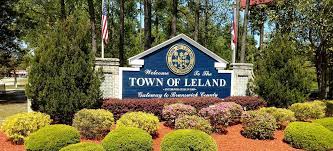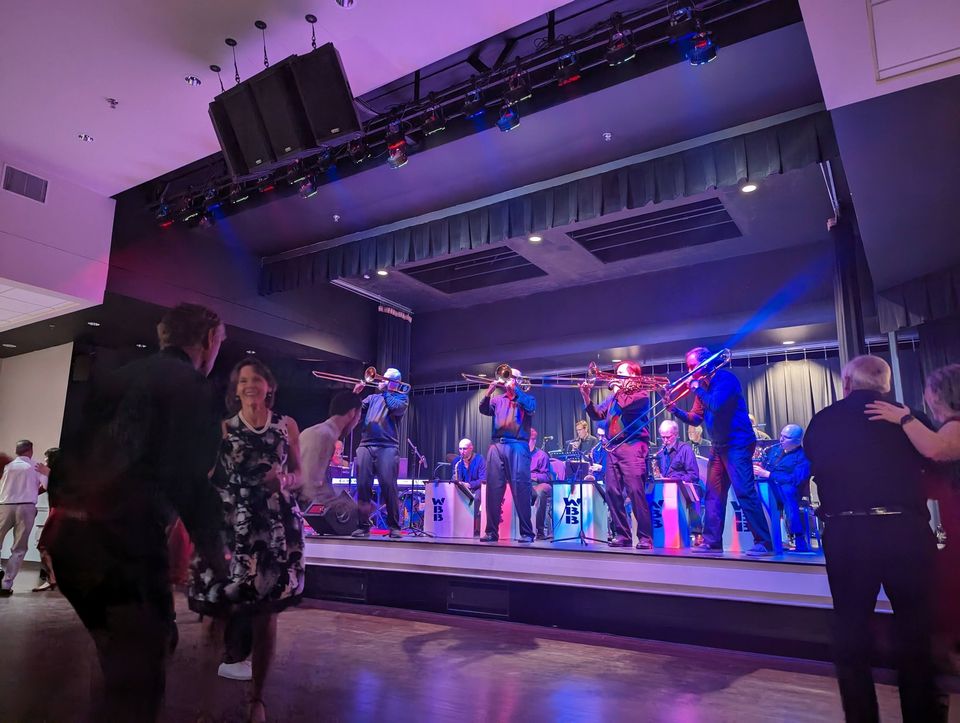Local elections are coming up on November 7, and while the incumbent campaign candidates (Mayor Brenda Bozeman, and Council people Veronica Carter and Bob Campbell) are uncontested, we asked Mayor Brenda Bozeman to sit down with us to tackle some of the most controversial questions Leland residents have put forth in recent weeks.
Bozeman is pretty much a lifelong resident and has been active in Leland government through service on committees and the council itself for over 30 years. She has been Mayor of the Town of Leland for 12 years. Her popular “Leland You Don’t Know” tours are constantly in demand. There is little she does not know about the history of the town. There is little she does not know about the County and Wilmington and New Hanover County. Now as a member of the Metro Mayors Association and Chairperson of the State Mayors Association for the NC League of Municipalities, she can network and learn the best practices of so many of our best State municipalities.
Q: There have been many complaints and questions about Leland council’s approval of a budget for 2023-2024 that reduced the current rate from .25 cents to .23 cents instead of lowering it to neutral to .21 cents. What are you telling residents about the rationale council used to settle on the higher amount?
A: You must ask other council members who approved the rate for their reasoning. I was against the measure. I did not feel this was the year to raise the tax given inflation, higher gas prices, higher homeowners’ insurance rates, etc.
That said, with the growth of the town and its needs, it was argued that increases were needed to augment our emergency services which require the town to put aside deposits for costly new equipment 2-5 years out. This type of fiscal planning is also used for other future needs. It was also desired to keep a healthy balance in the General Fund in case of emergencies such as we had with Hurricane Florence in 2018. Leland still maintains one of the lowest property tax rates among towns of similar or even smaller size. The influx of new residents, as I have heard directly from them, is due to our lower tax rates.
Q: Many Leland area residents are frustrated over the extremely slow pace of the NCDOT to identify, prioritize, and construct highway improvements to Rt 17 N/S and replace the Cape Fear Mem. Bridge. Can you tell us anything about what NCDOT is planning for our anticipated future traffic bottlenecks?
A: As Mayor and member of the Wilmington Metropolitan Planning Organization (WMPO), I can say that NCDOT and WMPO are working with our team on ideas to improve Leland’s transportation future. I am pleased that the widening of Rt. 133 S began with the first phase at the diverging diamond at Rts. 17, 74, 76 and 133 and extending to Belville Elementary. Leland WMPO reps and I worked nonstop for the last several years to ensure that the widening project would remain a priority, despite a pause in plans for the Cape Fear Crossing/Skyway. Remaining phases of the widening project will extend to just past Leland subdivisions Westport and Mallory Creek Plantation.
In another development, the town is conducting a traffic light assessment for improvements at the busy intersection of Olde Waterford Way and Poole Road. Engineers are collecting traffic data and looking at current and future development plans in the area in making their recommendations. This is a town owned traffic light, so this study will aid us in projecting and planning upgrades for this future capital improvement.
NCDOT is way behind in planning for an additional lane on Rts. 74 and 17. Look at the Hampstead Bypass for an example. The widening of that stretch of road has been on the books for 20 years. It will be another 6 years before the widening project is completed. Why? Because emphasis on projects is placed in Charlotte, Raleigh, and Greensboro. Wilmington and its transportation needs are simply not a priority. The data driven process has been a resounding failure where our area is concerned.
I have also received a question about whether the town has a plan to alleviate traffic at the Brunswick Forest/Low Country roundabout, and if another street is planned for Mallory Creek traffic to Rt. 17.
The roundabout was intended to be a short-term measure to handle growing traffic in that area. The plan is to eventually install a traffic light. This expensive capital improvement is planned for some time in the next 2-4 years. Coming soon, there will be an additional road cut through from Rt. 133 to Rt. 17 on the south side of the Jackeys Creek development, just before Westport.
The replacement of the Cape Fear Memorial Bridge is currently in the hands of State transportation officials as the funding for this important project will need to come from the State and NCDOT and from grants. This is because regional transportation officials neglected to add the project to the State Transportation Improvement Plan (STIP) years ago in favor of putting all their eggs in the Cape Fear Skyway/Crossing basket. As a result, the replacement was omitted from the data driven process for scoring and prioritizing statewide transportation needs until recently. You have seen newspaper reports that quote NCDOT officials as saying, “the replacement has not scored high enough.” This is simply crazy. I have insisted that of all our local projects on the STIP, the missing bridge replacement is the most important and urgent priority due to many critical factors other projects do not possess. You must wonder who is inputting the data for the data driven process? No surprise — the NCDOT and local officials (except Leland and Wilmington!) are still trying to sell the State on a toll bridge.
Q: Many residents have shared concerns about the rapid growth of the Town absent the addition of more infrastructure. Will Sen. Rabon’s recent legislative action stop the growth?
A: Our goal is to manage the growth we are experiencing. One of our critical tools is the 2045 Master Plan. When a landowner decides to sell their property, they are entitled to do so to anyone they choose. The town’s hands are tied. We cannot stop a landowner from doing what he or she wants with their property. When a project is submitted to the town’s Planning Department, a lot of residents do not realize that there are many criteria that must be fulfilled before approval. Some are State mandated while some are through our town zoning and ordinances. An important part of the process is the project must be studied by a 14-member Technical Review Committee (TRC). The committee consists of representatives from many different departments and agencies including emergency services, transportation, zoning, environmental (flood plains), etc. Members of this committee must review, make modifications, abide by regulations, and otherwise sign off on these projects before they come to the council. Developers must meet requirements and add appropriate infrastructure including needed roadways and access to highways.
Sen. Rabon’s recent legislation preventing the Town from accepting any more voluntary annexations WILL NOT stop the growth in the area. Brunswick County has accelerated their zoning approvals in the last few months and are embarking on an ambitious increase in development involving thousands of acres in the southern part of the county to the border with South Carolina. Belville has also indicated a desire to annex property for development. Navassa also has plans for their waterfront. The remaining County property adjacent to Leland is also in play. Keep in mind that Leland’s zoning regulations are more stringent than those of the County. And, importantly, keep in mind that when the county or Belville or Navassa builds near Leland, those folks will use our roads, some emergency services, and amenities without the need to pay taxes to pay for them. We do. That is just the way it is.
Q: What is your opinion about the possibility of a merger between Leland, Belville and Navassa?
A: I wish. There would no doubt be an unbeatable economic benefit to each town and their residents, and the region, if such a collaboration could be achieved. Of this, however, there seems to be no interest among the officials of Belville and Navassa.
Navassa prefers to keep their status as it allows them to receive needed funding through grants and other state and Federal assistance. With Belville, unfortunately there is too much bad blood with Leland that has its roots in the formation of the towns decades ago and continues to fester. It is a past in which we are stuck and cannot seem to be overcome despite Leland’s attempts. I keep trying to work with Belville Mayor Mike Allen; I have extended the olive branch. Then when I think we may have reached a breakthrough, communications fail, and we fall back once more. I want to continue to keep that door open. Belville is doing a lot of good things, and I applaud them on their Riverwalk which has become a real gem for the area.
Q: What can be done to stop the burning we experience from time to time?
A: I asked our Town Manager and staff to investigate the current State rules governing controlled burns and their requirements. We hope to produce an ordinance that will put more controls on those exercising these burning projects in the town limits with the goal of cutting down on the irritating smoke that is making life uncomfortable, especially for those with health issues. After the Green Swamp wildfire a few months ago, this issue gained even more traction in the media. This has caused government entities to look more closely at the safety issues involved when these burns are conducted and by whom.
Q: What do you think is Leland’s best quality?
A: Most definitely the residents. I continue to meet some of the most kind, generous, and thoughtful people in my travels around the town. The volunteerism is awesome. People who have moved here have brought a special can-do spirit with them from all over the country which has made that spirit, already demonstrated by our native citizens, even more special.
Editor’s Note: Pat Batleman is a Board Member for Cape Fear Voices/Teen Scene







